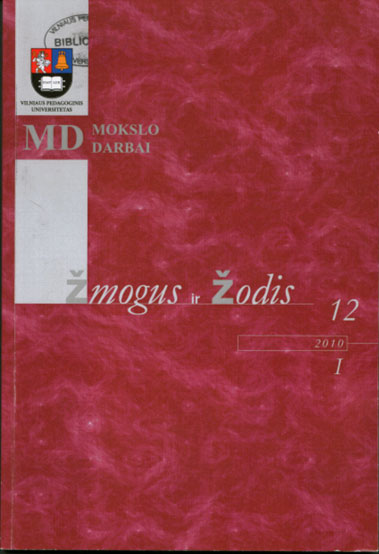Linksniuojamųjų žodžių kirčiavimo įvairavimas Veisiejų, Kapčiamiesčio ir Šlavantų šnektose
The Variety of Stress of Inflected Words in the Dialects of Veisiejai, Kapčiamiestis and Šlavantai
Author(s): Vilija Lazauskaitė-RagaišienėSubject(s): Language and Literature Studies
Published by: Vytauto Didžiojo Universitetas
Keywords: inflected word; two-syllable noun, multi-syllable noun; stem; derivative suffix; stress variant; stress paradigm; oxytonesis.
Summary/Abstract: The purpose of this study is to describe the tendencies and usage of stress in inflectional words in the South-West Dzūkian dialects of Veisiejai, Kapčiamiestis and Šlavantai as well as to explain the causes of the possible mixing of the stress paradigms. The material researched consists of about two hundred two- and multi-syllable inflected words – nouns, adjectives, numerals and pronouns. Most of them have been selected from the 2005–2007 audio recordings kept at the archive of the Department of the Dialects of the Institute of the Lithuanian Language. The material demonstrates two important things. Firstly, two-syllable nouns of masculine gender, especially with productive stems (they account for about 70 percent of the words studied) tend to mix stress paradigms. Secondly, forms of inflectional words with oxytonic stress are more common in the dialects of Veisiejai, Kapčiamiestis and Šlavantai (one of the most common variants are singular instrumental and / or plural accusative end-stressed forms of words of the fourth stress paradigm of the first / third accent class). The appearance of forms with dual stress and an apparent tendency towards oxytonesis is first of all linked with a semantic and stress model of two plural forms, simple and collective, which is being reconstructed. It is presumed that mixing of stress paradigms of inflected words and the generalisation of oxytonic stress in the investigated dialects of Veisiejai, Kapčiamiestis and Šlavantai as well as across the South-West area of the Dzūkian dialect may have started a long time ago.
Journal: Žmogus ir žodis
- Issue Year: 12/2010
- Issue No: 1
- Page Range: 103-110
- Page Count: 8
- Language: Lithuanian

